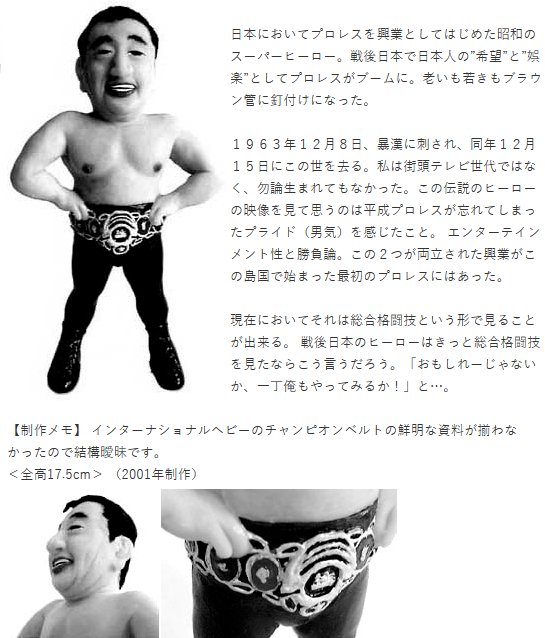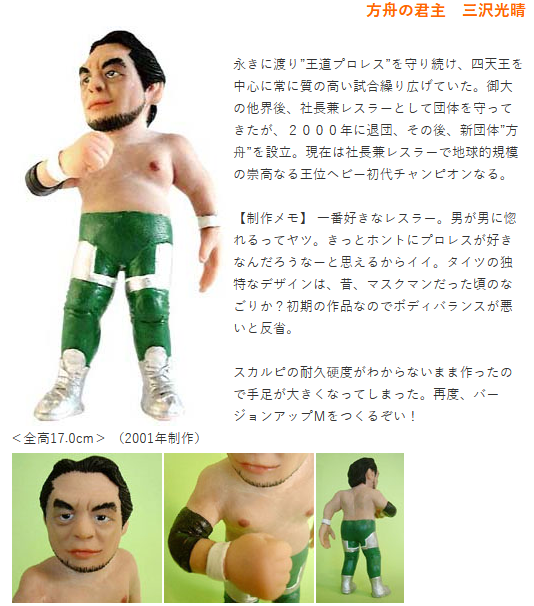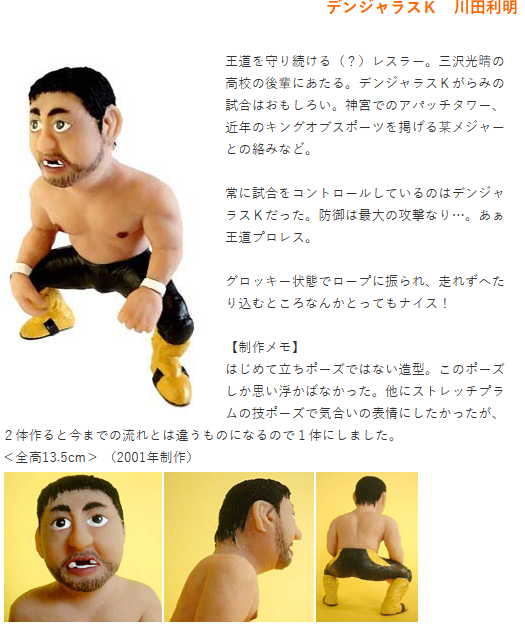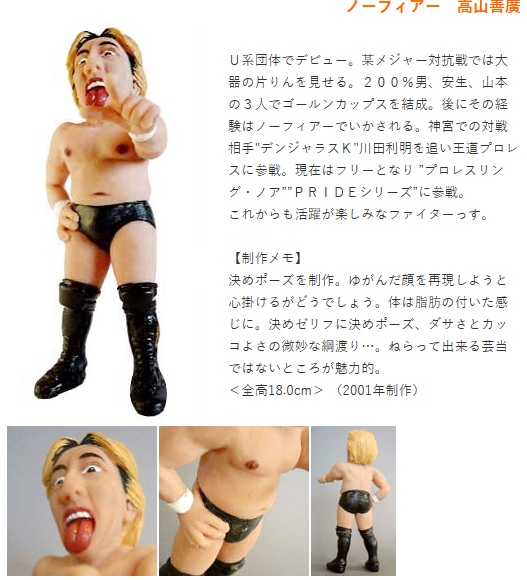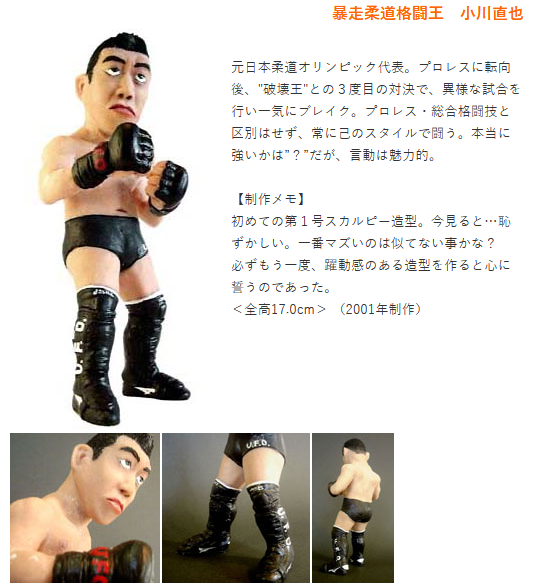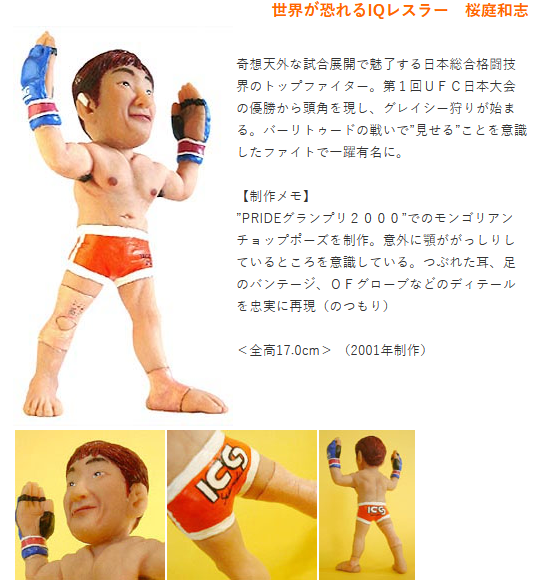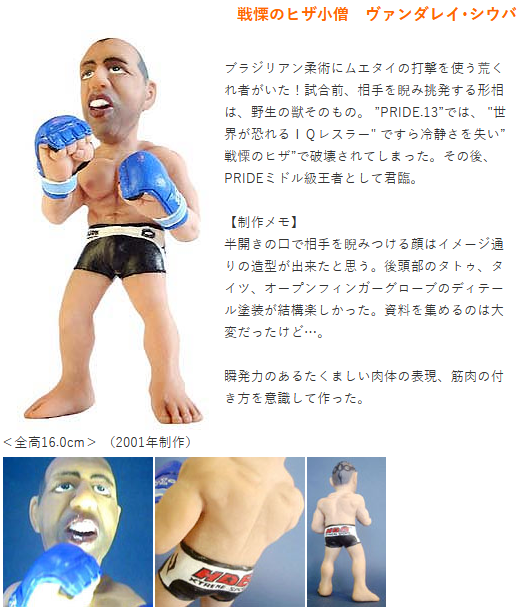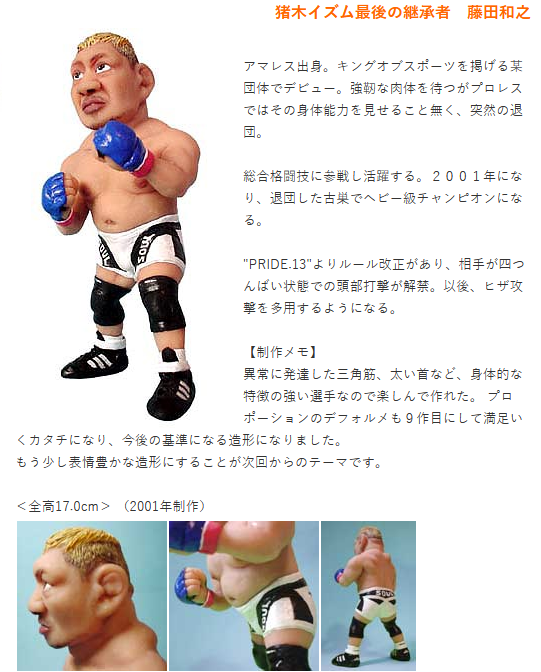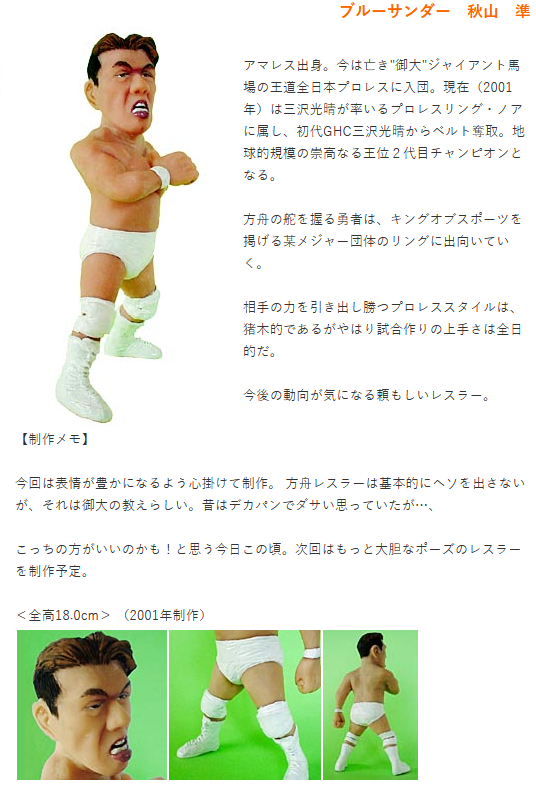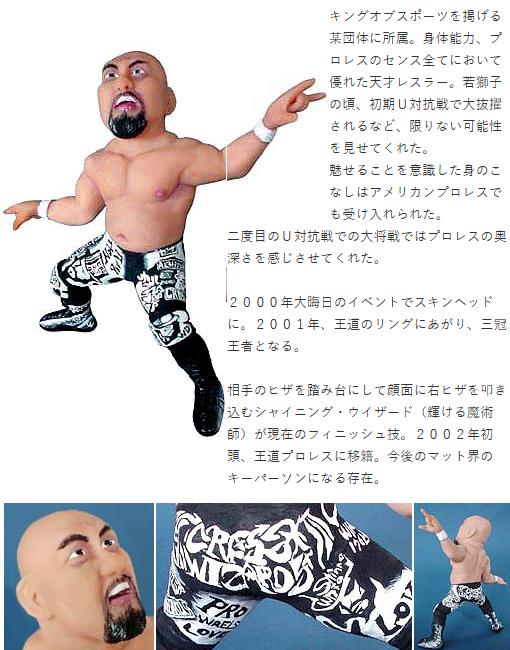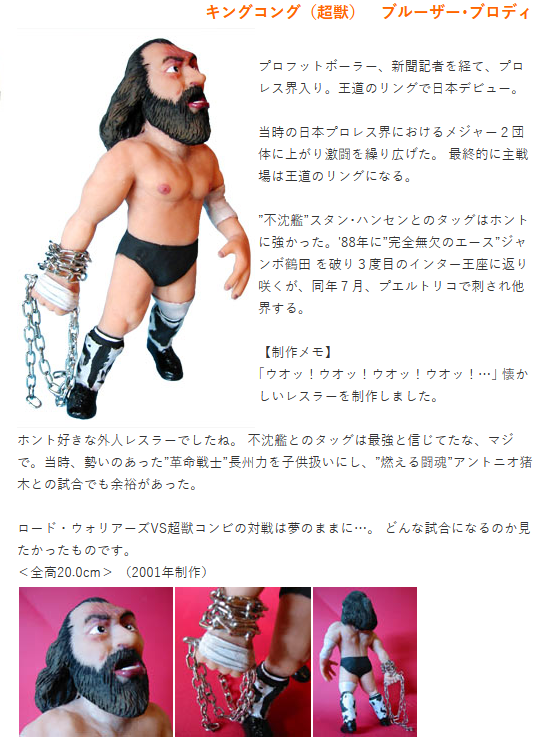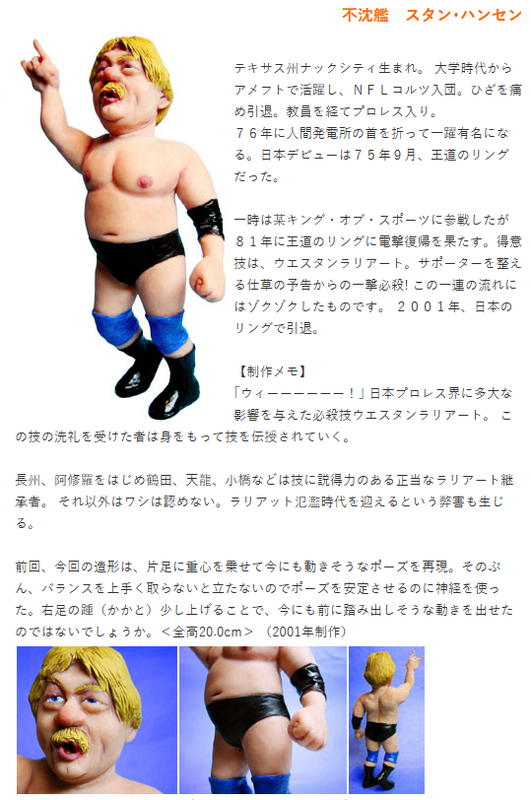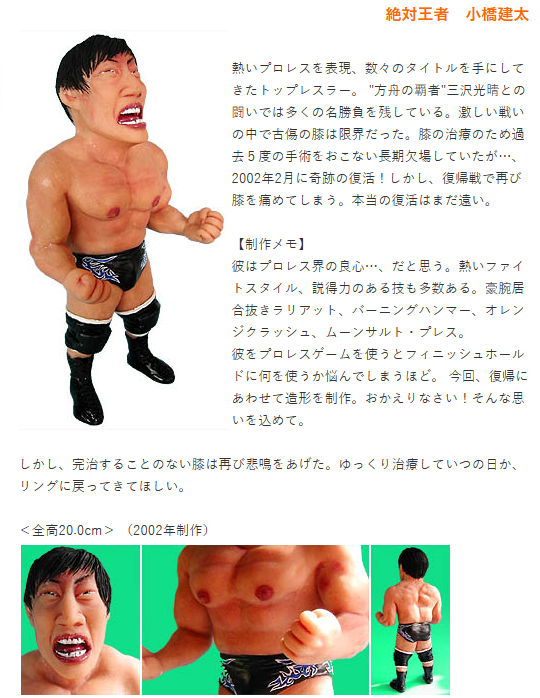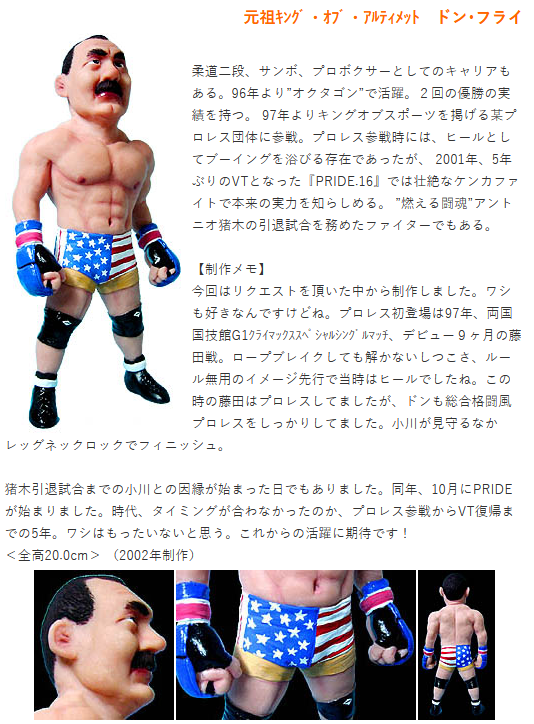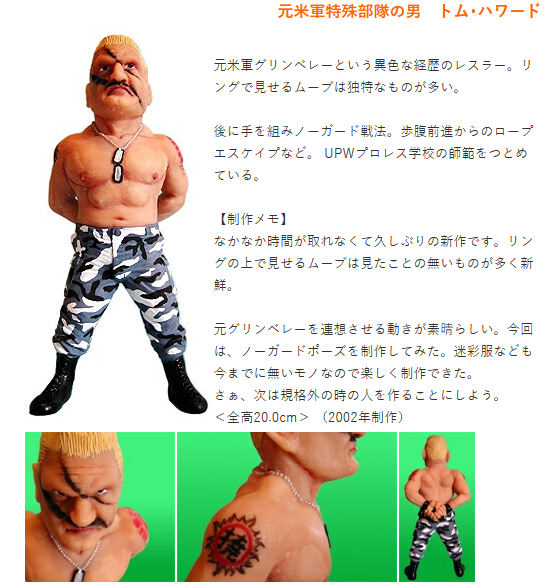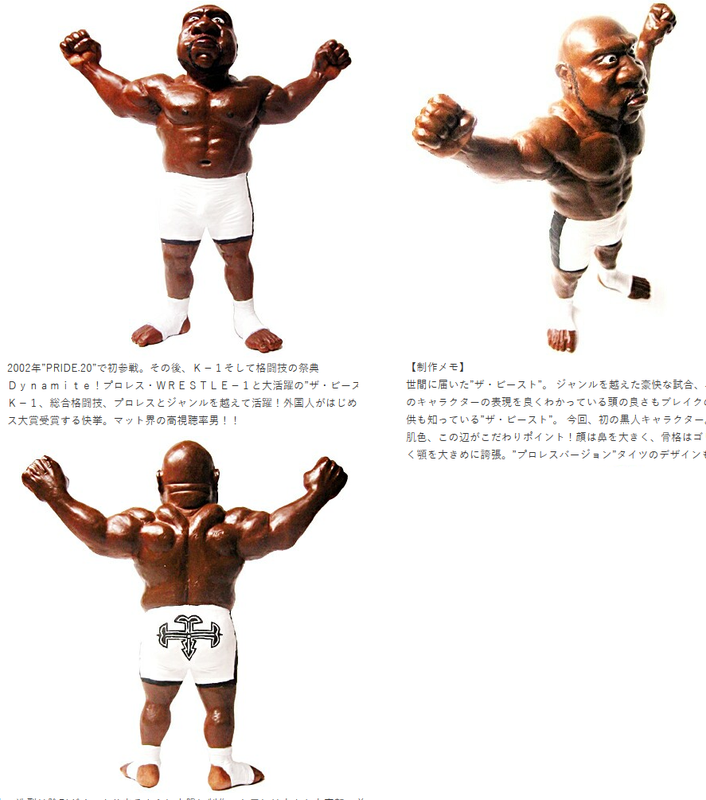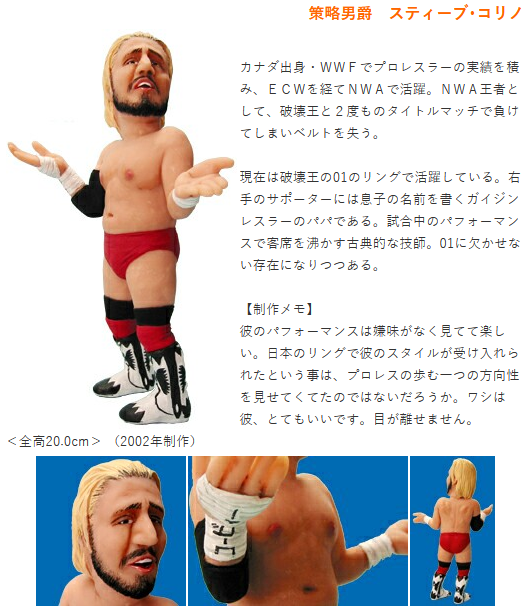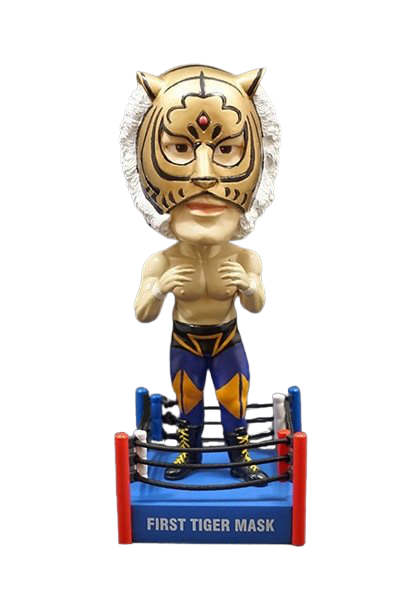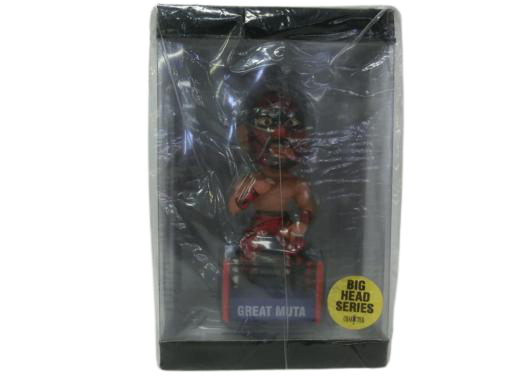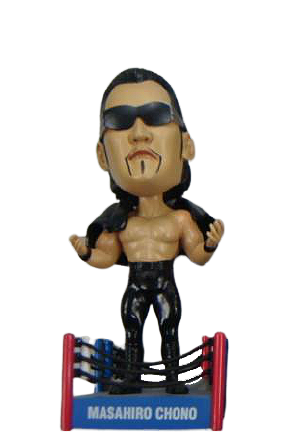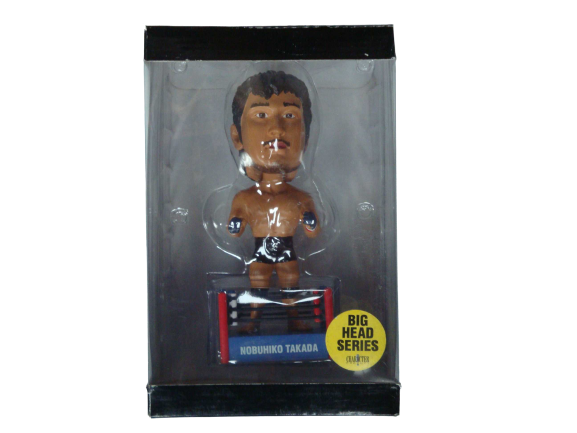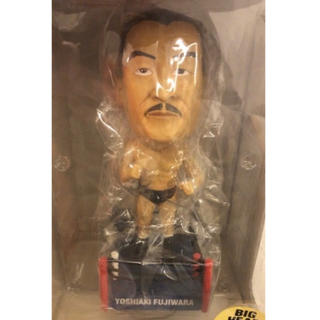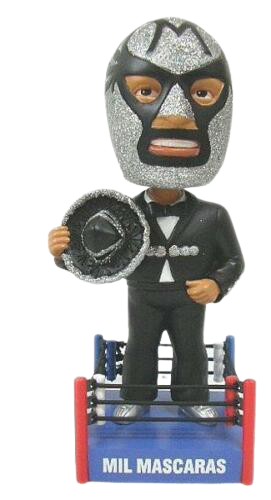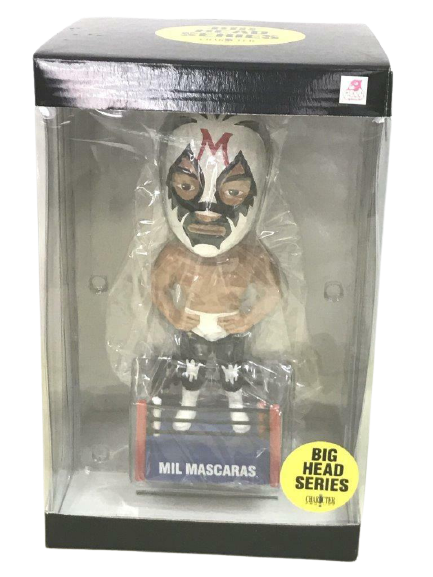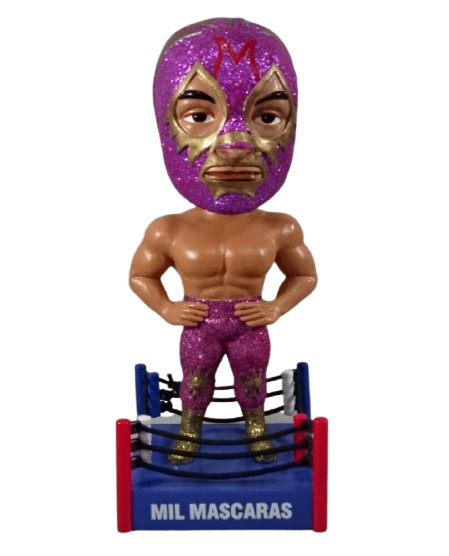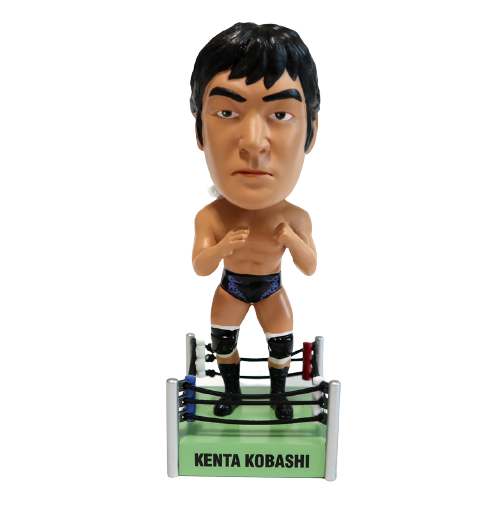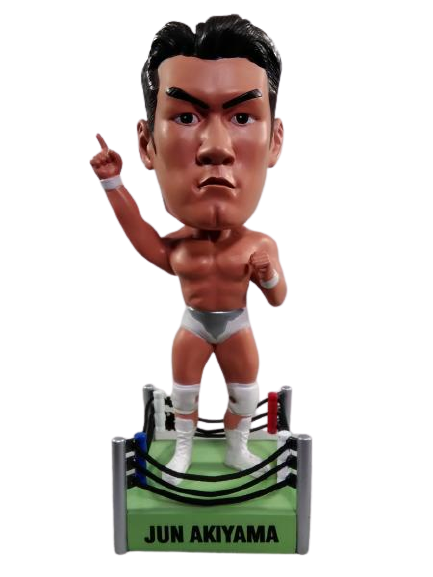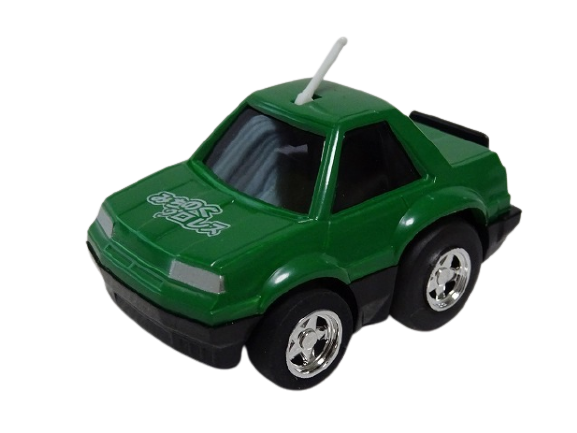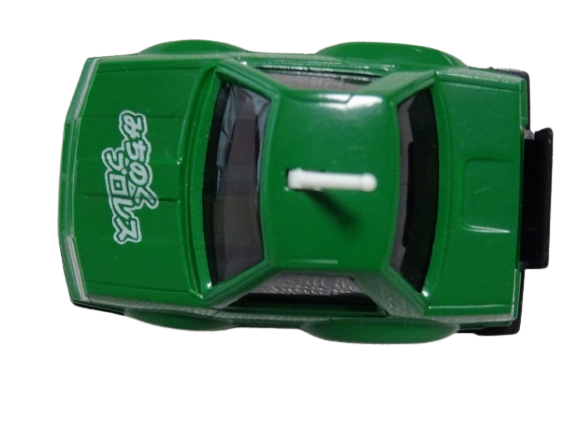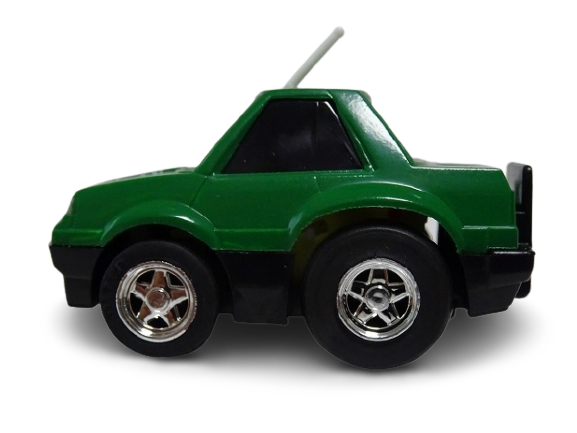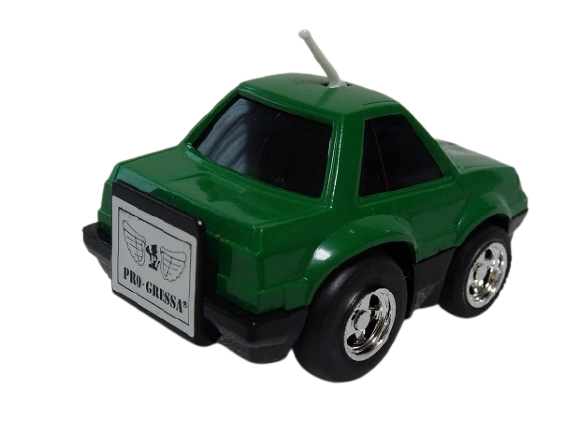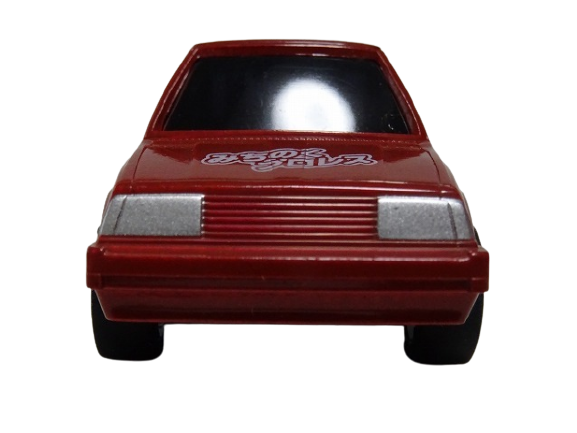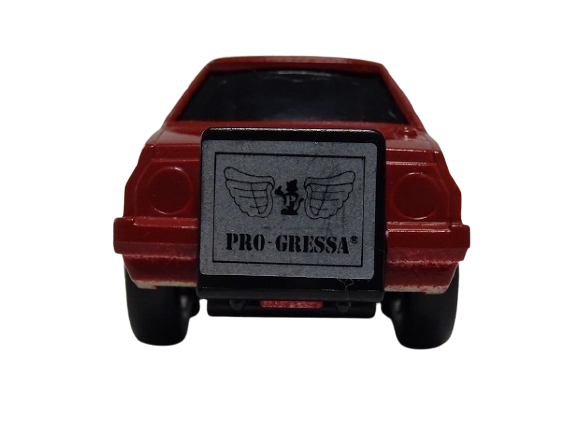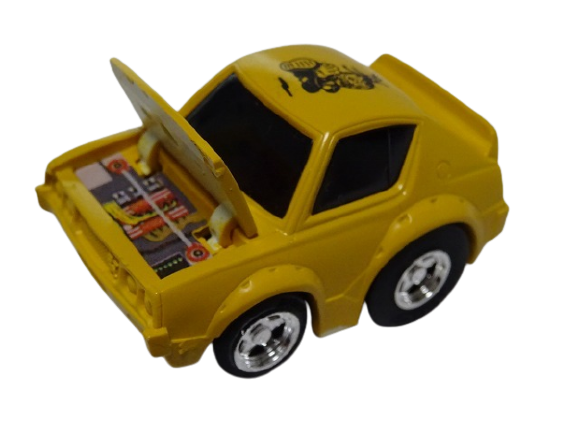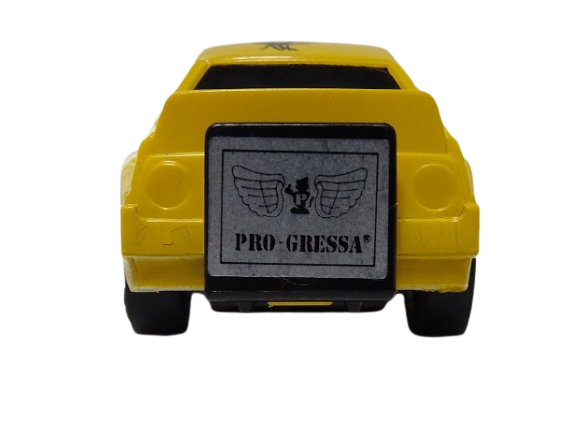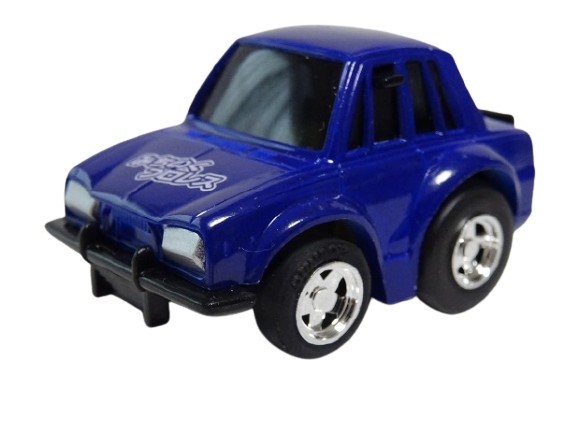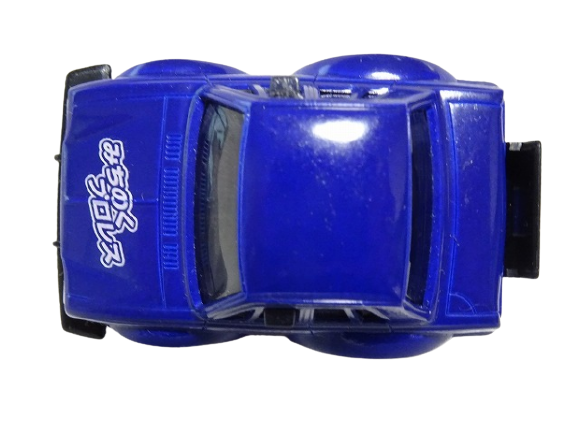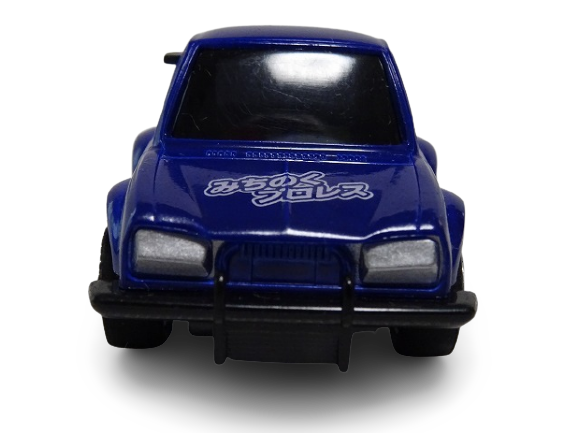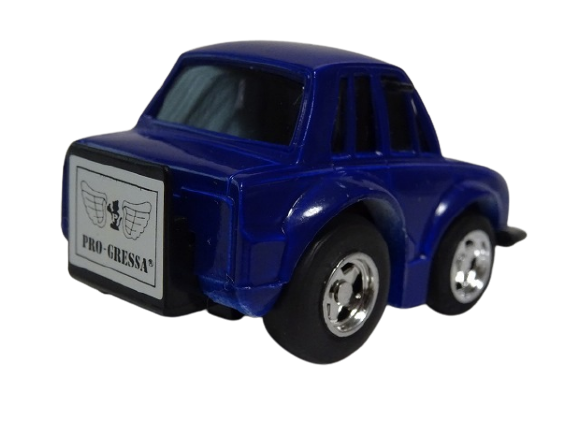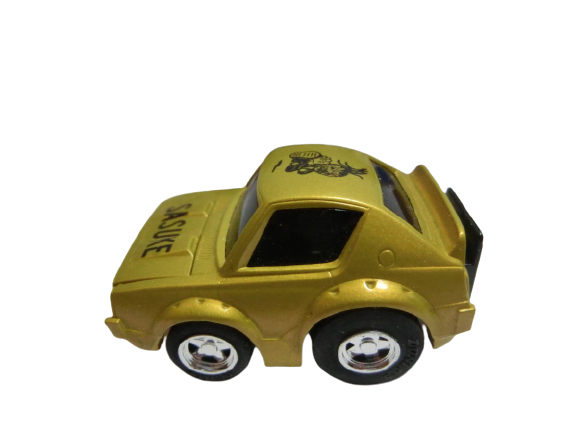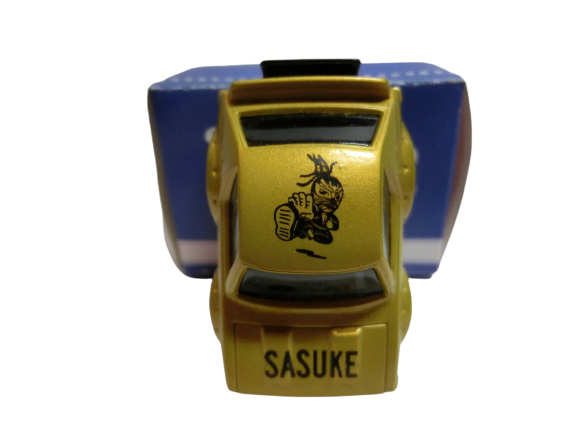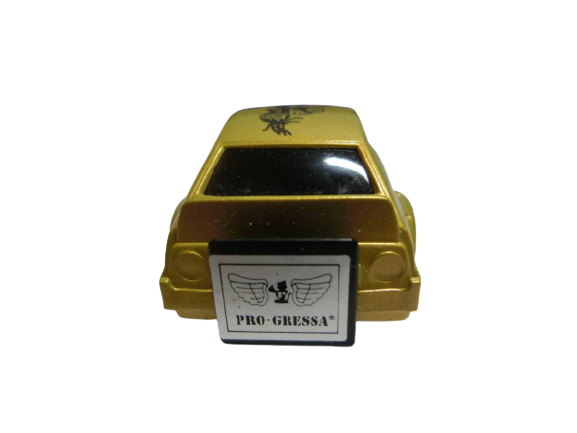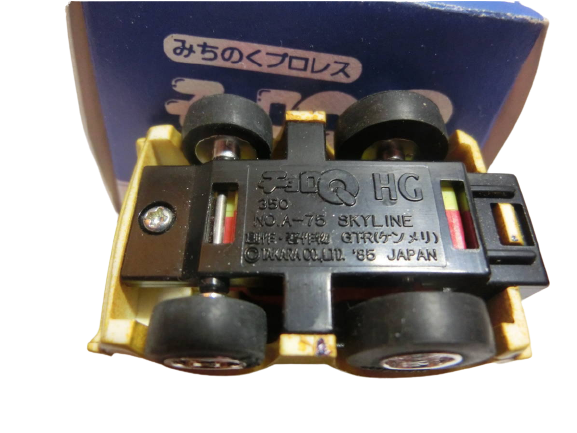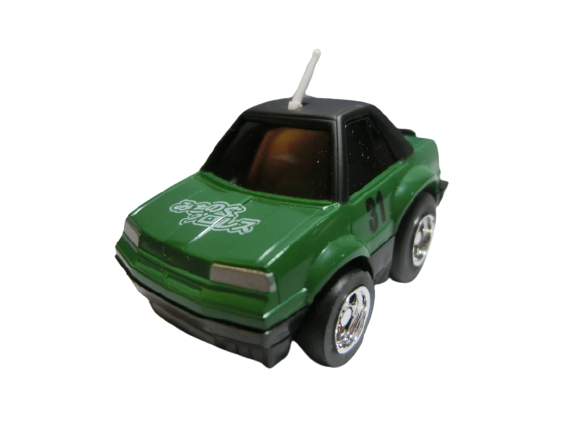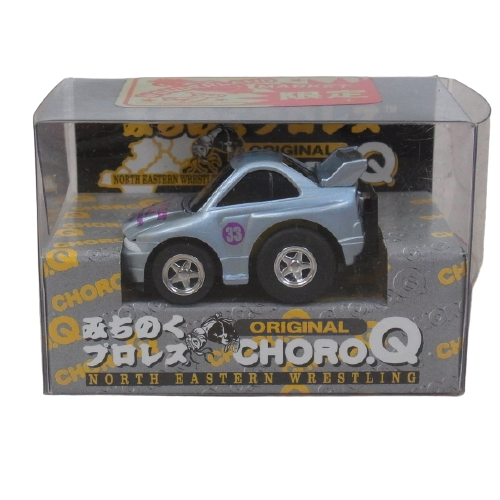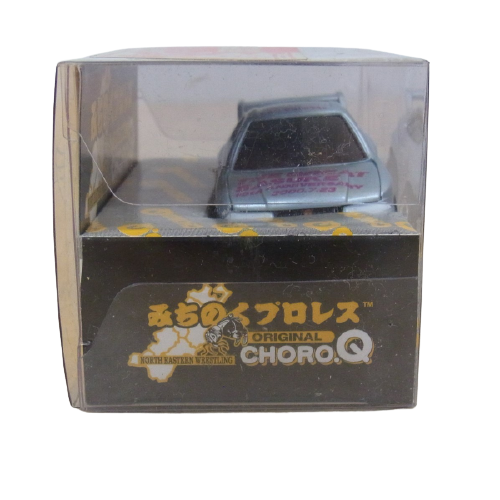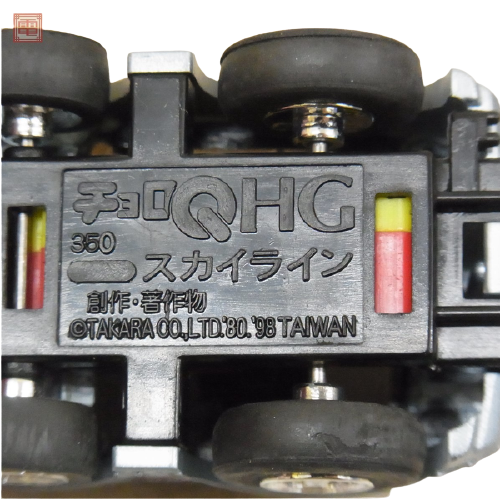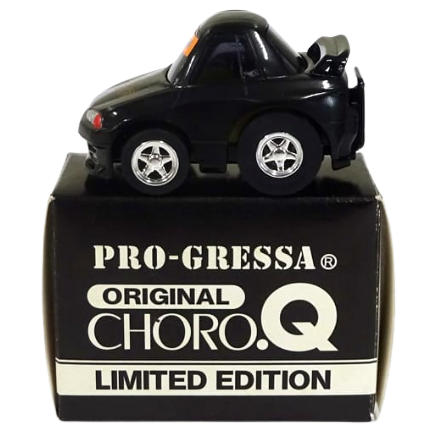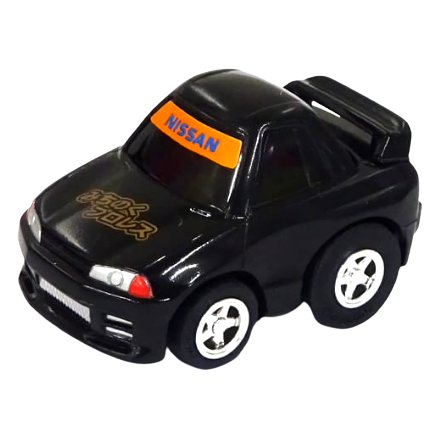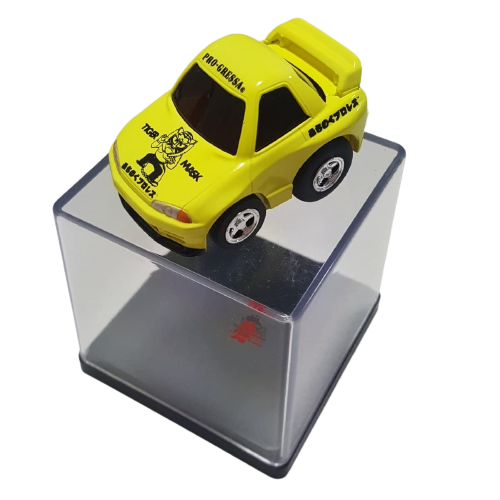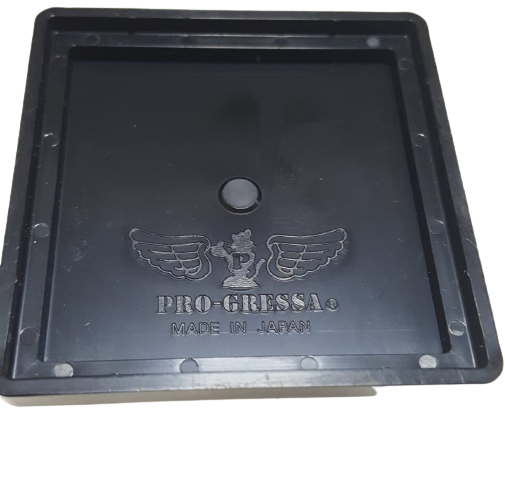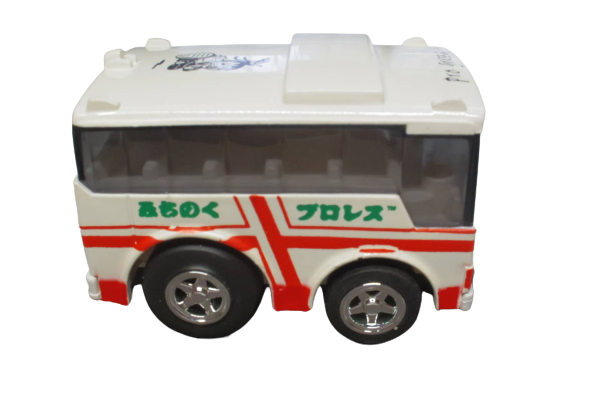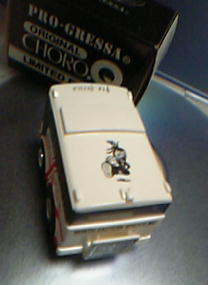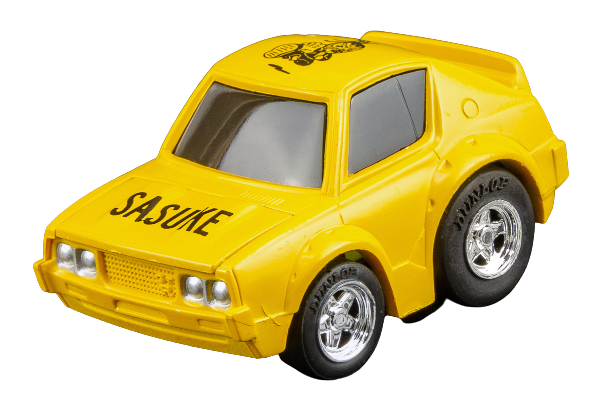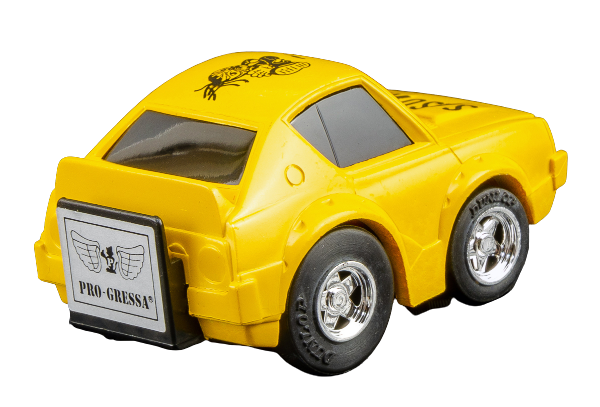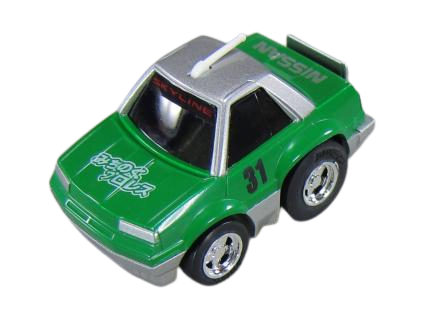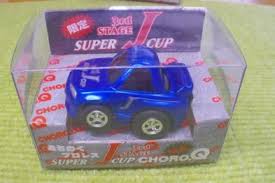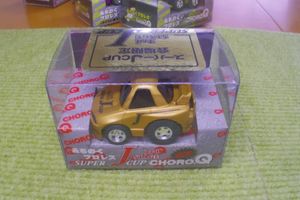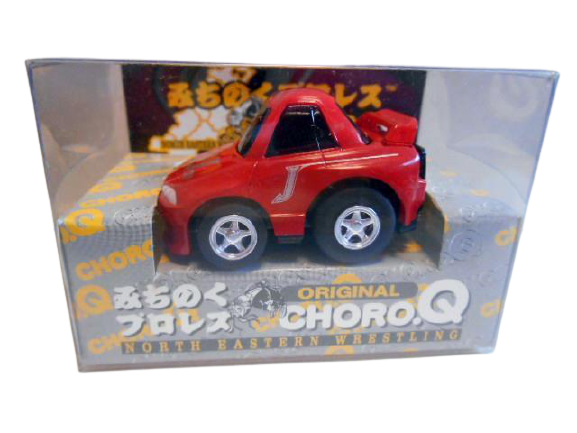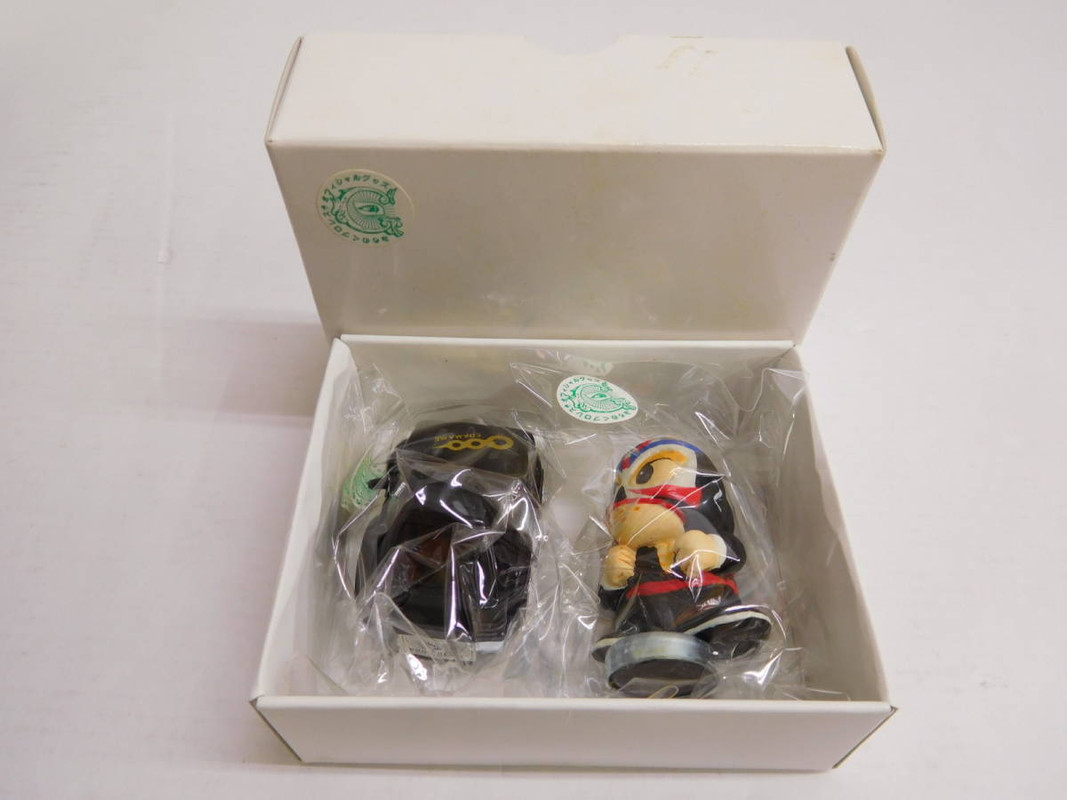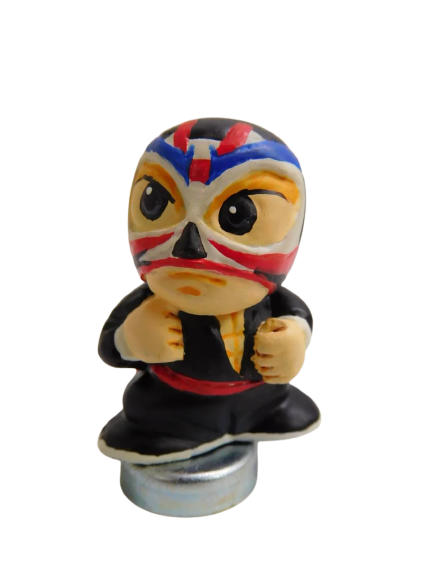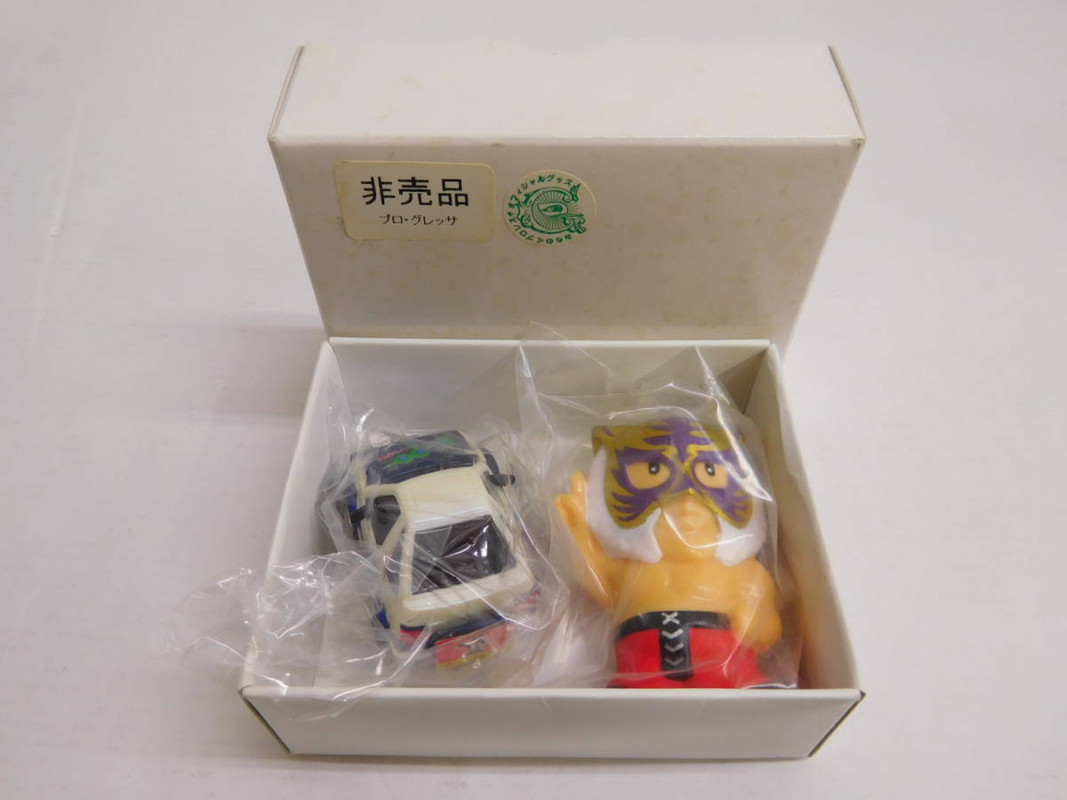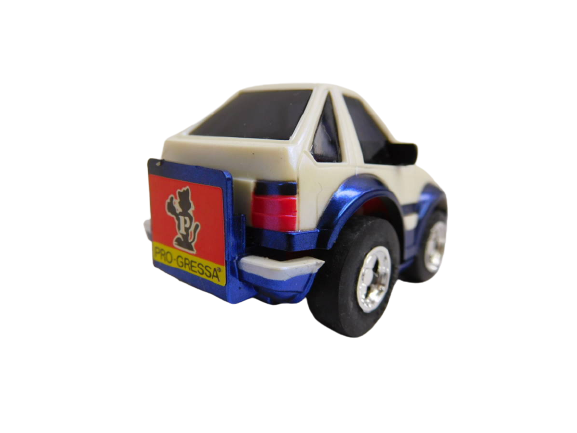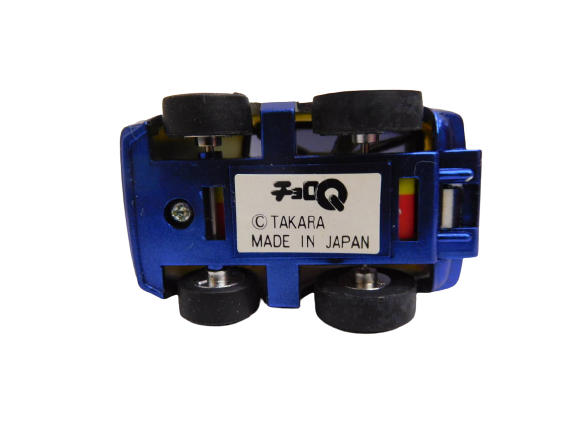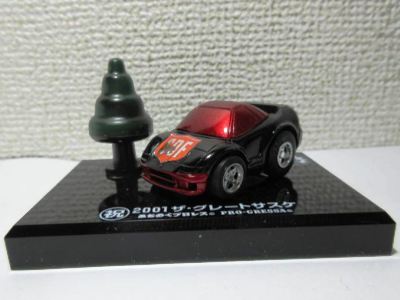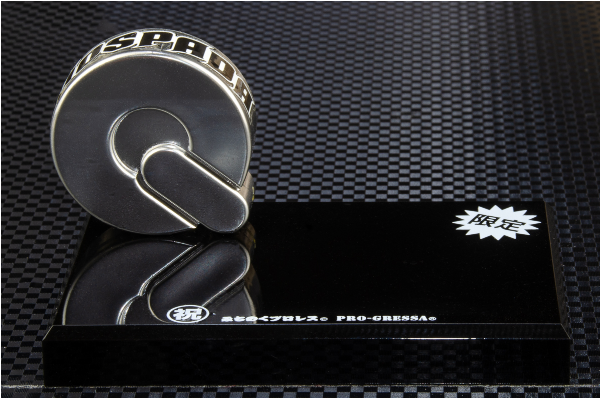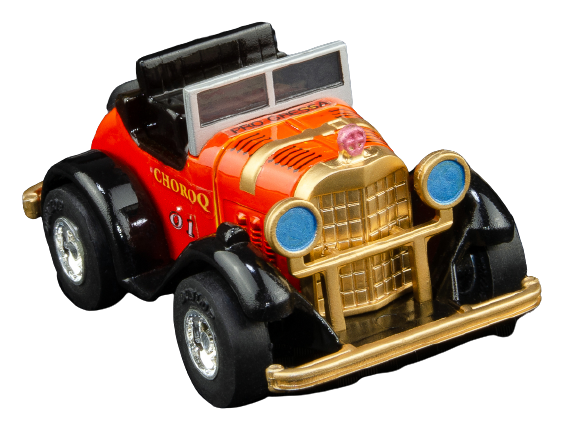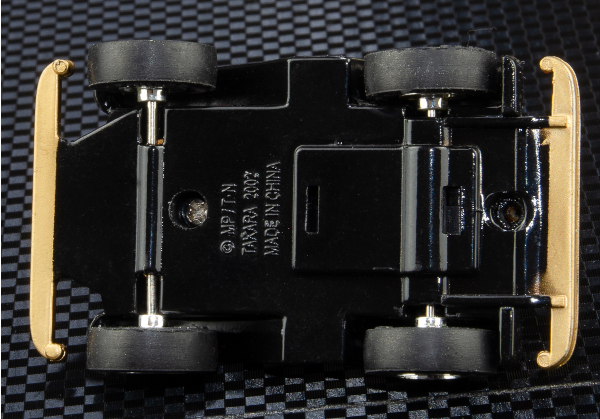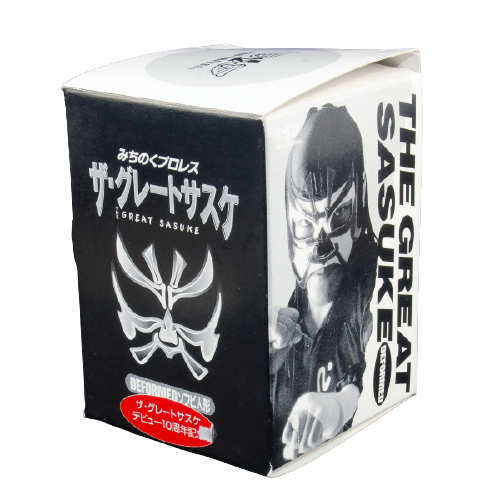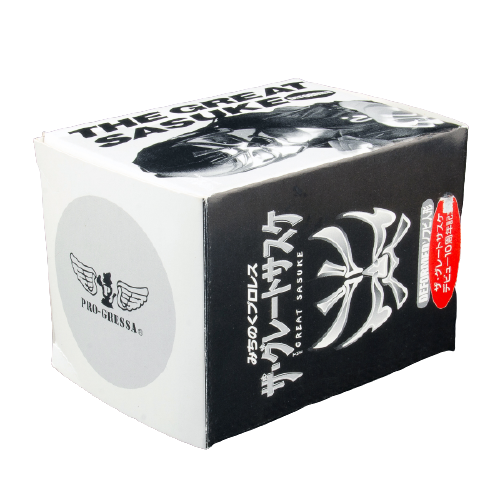For today's figure coverage, we'll be looking at another group of customs that literally
broke the mould.....a clay mould.
Blog #233 builds upon 0101clay.com's custom Pro-Wrestling clay figures.
Each custom includes the Wrestler's biography along with design notes, the size of the
custom and the year the custom was made. The orange writing indicates the Wrestler's
name and nickname respectively.
In this case, "the father of Puroresu" Rikidozan looks like he was coloured to resemble
a Pro-Wrestling match from an old fashioned 1950's television screen (a concept
Mogura House also incorporated at the time for their Rikidozan and Kenta Kobashi
figures).
Rikidozan also includes his famous International Heavyweight Championship belt that
was prominently won from Lou Thesz.
Next up is another recognizable face: Mitsuharu Misawa.
Misawa is sculpted to resemble his early 2000's Pro-Wrestling NOAH appearance.
A slightly heavier Misawa with a chin strap of facial hair.
Maybe it's just me, but the top picture reminds me of a planet of the apes character.
Misawa's long-time rival "Dangerous K" Toshiaki Kawada is our third clay figure.
Kawada is sculpted in a pre-bout stretch and includes Kawada's infamous missing front
teeth!
Legend has it that Kawada lost his teeth from a poorly-placed Lariat from Stan Hansen.
Yoshihiro Takayama complete in his "NO FEAR" team pose. The NO FEAR stable
started in All Japan Pro-Wrestling with fellow AJPW veteran Takao Omori before
migrating to Pro-Wrestling NOAH.
The "King of Destruction" Shinya Hashimoto in clay figure form.
Sculpted in 2001, this clay figure pays homage to Shinya Hashimoto's stiff fights
in the ring that often ended with blood, sweet, tears and ....nose bleeds.
Naoya Ogawa is best known as a World Champion Judoka and mixed martial artist who,
as the story goes, was instructed by former NJPW owner Antonio Inoki to legitimately shoot
on Shinya Hashimoto in a match.
The match took place on January 4th, 1999 where Hashimoto was easily taken down; leading
to the king of Destruction to step away from the ring temporarily in order to rebuild his
credibility as a Pro-Wrestler.
In figure format, Ogawa is sculpted wearing his era-accurate U.F.O. attire.
The always-cheerful Kazushi Sakuraba is the next mixed martial arts star to be translated
into clay format.
In the early 2000's, shoot fighting promotions were still all-the-rage in Japan. Probably
the three biggest non-UFC promotions at the time were PRIDE, HUSTLE and K-1.
The included figure is that of PRIDE fighter Wanderlei Silva; as he appeared at the
PRIDE 13 event.
Another one of Antonio Inoki's shoot fighting projects was Kazuyuki Fujita.
Fujita is probably best known to western audiences as "that Japanese shoot fighting guy
who held two NJPW belts at once".
Again, Fujita is sculpted wearing his "Soul" ring attire worn during Fujita's NJPW and
Pride 13 appearances from 2001.
"Blue Thunder" Jun Akiyama. Jun is depicted in his early 2000's ring attire where Jun
switched out his classic blue trunks for a white set.
Jun is also sculpted with a thumb across throat pose - a signature taunt of Akiyama's
during the era.
Apologies for the choppy picture. The page that features this Keiji Mutoh clay figure was
cut into two uneven portions.
Anyways, this clay figure is based on Keiji Mutoh's popular re-branding as the "Cross
Wizard" with a recently-shaved head.
The Cross Wizard decals are accurate and Mutoh is sculpted in his iconic "Pro-Wrest LOVE"
pose.
Not knowing this Keiji Mutoh clay figure was a custom figure (and being the first of 0101's
work that I randomly came across), I was stumped for quite a long thinking this clay Mutoh
figure was a piece of obscure, mass-produced merchandise from Japan. Not the case.
Up next is another exciting piece. "King Kong" Bruiser Brody.
Brody looks like he contains a diecast chain and detailed fur covered leggings.
The cartoonish design alone makes me wish 16d/HAO would make a Brody figure
already.
We can't talk about Bruiser Brody without mentioning Brody's legendary tag team partner:
Stan "The Lariat" Hansen!
Stan is sculpted in his signature "Yoooouuuuth" pose; complete with Texas Longhorns pose,
left elbow pad and Hansen's recognizable facial expression made during the taunt.
Tamon Honda. Another All Japan Pro-Wrestling veteran that jumped ship to Pro-Wrestling
NOAH's formation. Best known for teaming with Kenta Kobashi.
For years, I thought the WORST Kenta Kobashi figure sculpt was Mogura House's
sofubi line (or YUJIN's Kobashi AJPW gumball machine figure). I now stand
corrected....
Yes, Kobashi is instantly recognizable....yet, that facial sculpt. THAT facial sculpt!
Obviously, Kobashi is painted in his modern, post-Orange Crush era attire.
Going back to the Mixed Martial Arts side of 0101's clay Pro-Wrestling series, we have
"the King of Ultimate" Don Frye.
Frye is painted in his patriotic, overly-American ring attire. Everything from Frye's
hairline, to signature moustache are faithfully replicated here.
Granted, Tom Howard is a name that is not familiar to me. At first glance, I thought
Howard was Corporal Kirchner, but Howard also had a Green Beret gimmick that
was used in Japan.
For what it's worth, I think this is one of the cooler designs on the list.
Mirko Cro-Cop is a legendary MMA fighter known for his lethal kicks.
Describing Cro-Cop's skills, there's a famous little quote that goes "right leg
hospital, left leg, cemetery".
Again, I think the resemblance is pretty spot-on. Even down to Cro-Cop's
renown Croatian Flag emblem on his trunks.
Bob Sapp is another clay figure that I feel veers too far on the cartoonish side.
I also feel Sapp's skin pigmentation is a tad too dark. Yet, Sapp's ring attire
has been once again recreated faithfully here.
Canadian Wrestler Steve Corino was also added to 0101's clay Wrestler lineup.
The Katakana on Corino's wrist tape reads "コービイー" (Kobe).
Sanae Kikuta was a big deal in the early 2000's. Best known in Japan for Kikuta's
high profile match against champion Koji Kondo.
I think the attention to detail really shines through with 0101's logo recreations along
Kikuta's gi.
The next clay custom is New Japan Pro-Wrestling legend Shiro Koshinaka.
The mould of this clay figure recreates Koshinaka's signature Hip Attack.
Koshinaka also includes a fabric hachimaki (the most famous piece of
Koshinaka's entrance attire which serves as a symbol of endurance to the
Japanese people).
0101 continued adding on to their Pro-Wrestling line of clay figures sporadically
for seven years. This 2004 clay custom of Pro-Wrestler Low Ki certainly shows
plenty of growth in 0101's craftmanship as a sculptor.
The face sculpt, while still cartoonish in nature, has plenty of realism for Low Ki.
Last but not least is Daisuke Naito.
Daisuke is holding the WBC Flyweight Championship belt and is sculpted in his 2007
ring gear.
Closing thoughts:
Between 2001 and 2008, 0101 sculpted 24 different likenesses based on some of the
most recognizable Wrestlers in all of Puroresu and the Japanese MMA scene of the era.
Would you collect these clay figures if they were mass produced into an actual toy line?
If you'd like to check out more of 0101's clay work with other licenses, you can do so
by clicking this link: HEREl
